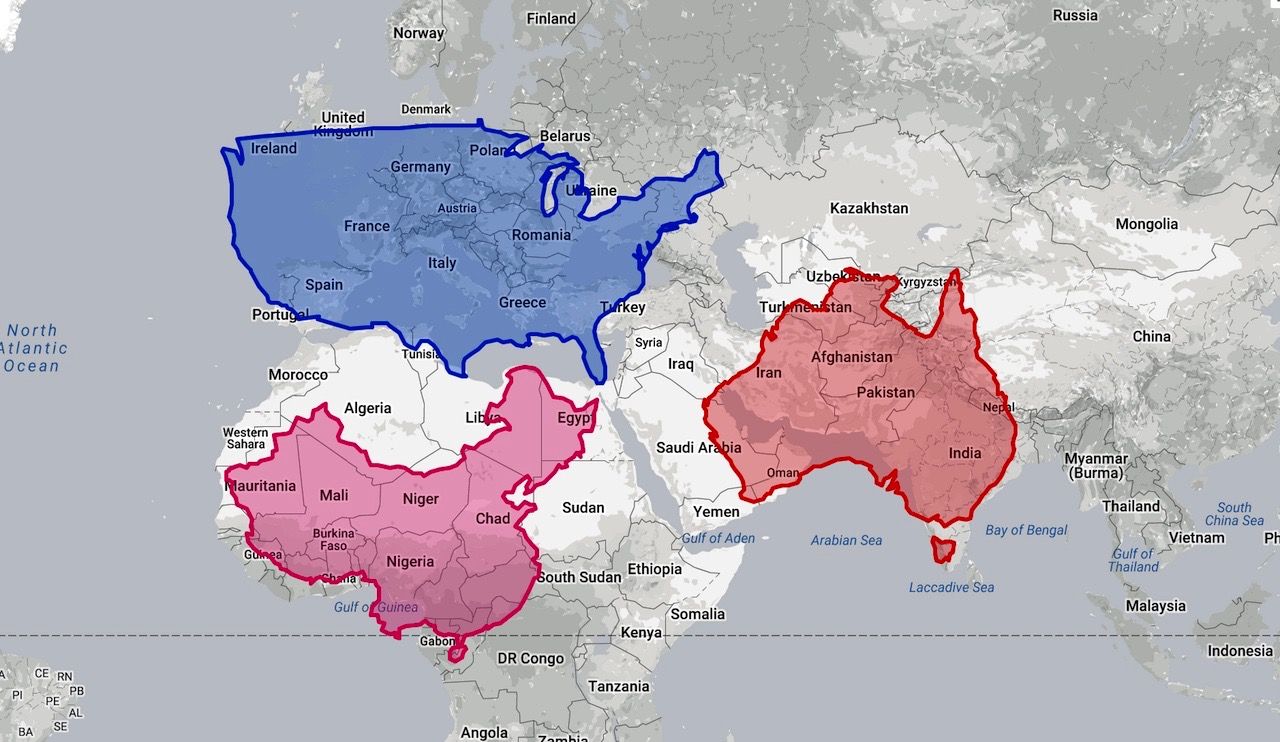Misleading Size and Distance
Maps such as the Mercator projection distort sizes and distances, exaggerating lands closer to poles. antarctica size comparison visually appears as large as other continents but is actually much smaller - its area of 14.2 million km2 is half of Africa’s 30.37 million km2. Distances are also misleading - the 2,621 km London to Calgary route looks shorter than the actual 7,450 km Singapore to Nairobi distance. Such distortions stem from projecting a globe onto a flat surface.

No Single True Center
Mercator maps are commonly centered around either Europe or North America, implying those regions are the world’s center. However, there is no objective center - centering the same projection around other lands would look quite different. Africa’s massive size, larger than China, India, and the continental U.S. combined, suggests it could be considered central. Overall no single place can claim to be the true center, as the concept of a center arises from distortions in mapping techniques.
Longest Distances Around the Equator
Considering distances between regions straddling the equator provides a more accurate perspective. The farthest capital from Singapore would be Quito, Ecuador at 19,742 km rather than the shorter 10,982 km between Beijing and New York. Countries with land on both sides of the equator like Brazil, Indonesia and Democratic Republic of Congo truly span half the world.
Russia’s Vast East-West Reach
While Russia lacks land on opposite sides of the globe, it holds the record for the longest country end-to-end at over 9,000 km from its westernmost to easternmost coastal borders. This unprecedented distance within one nation’s territory challenges preconceptions of global geography.
Pitcairn Island: Earth’s Remote Inhabited Land
Though not an independent state, the tiny island of Pitcairn and its population of around 50 residents claim the distinction of being Earth’s most isolated inhabited place. Located midway between New Zealand and Peru in the vast South Pacific, over 3,300 km from its nearest neighbors, Pitcairn Island epitomizes the concept of remoteness. Its residents have created a unique culture in such an enormously far-flung location.
Antipodes: Opposite Sides of the Spinning Globe
To truly grasp the globe’s rotated nature, one must consider antipodes - places diametrically opposite each other. Vancouver BC’s antipode lies in the southern Atlantic, while London’s is east of New Zealand in the Central Pacific. Comprehending where populated lands fall on the opposite hemispheres highlights how locations relate when viewed through the lens of Earth’s spherical shape rather than flattened maps. Overall antiquated concepts of centrality and distance distort our geographic understanding until reexamined with corrections for mapping projections.

 Santiago and Surrounding Areas: Travel Guide and Insights
Santiago and Surrounding Areas: Travel Guide and Insights